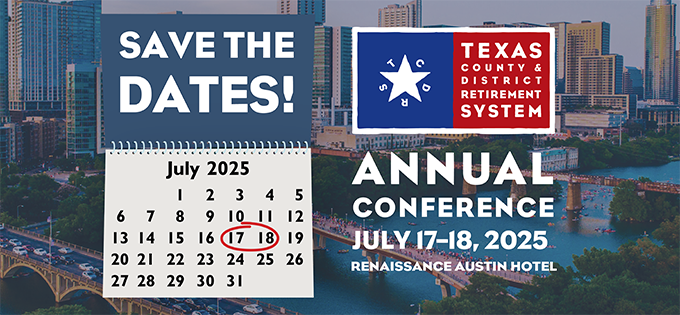Updating your browser will give you an optimal website experience. Learn more about our supported browsers.
Rehiring Employees and Retirees
In order to avoid jeopardizing your plan’s qualified, tax-deferred status, carefully evaluate your human resource policies concerning rehiring retirees and former employees.
Avoiding in-service distributions
An in-service distribution is either a retirement benefit or an account withdrawal to an employee who is still actively employed with you. These kinds of distributions are impermissible under federal and state law. An in-service distribution invalidates the employee’s retirement or withdrawal. If it is not corrected by the return of benefit payments or the withdrawn amount (by either the employee or the employer), then it could jeopardize your TCDRS retirement plan’s qualified status. Losing your plan’s qualified status could subject you and your employees to significant fees, penalties and additional taxes levied by the IRS.
Conditions for rehiring
Rehiring a retiree who is receiving a benefit from your TCDRS plan, or rehiring a former employee who has withdrawn his or her account, is not an in-service distribution as long as the following two conditions are met:
-
Bona fide separation in service: There must be a true separation in service between the employer and the employee in which the employer/employee relationship is completely severed. There can be no agreement to be rehired by your organization in the future.
-
One full calendar month separation in service: Assuming a bona fide termination, the employee must be separated from employment for one full calendar month. For example, if an employee separates from employment on April 15, the earliest that person could be rehired with the same employer is June 1.
Keep in mind that a termination is not considered bona fide if there is an expectation, understanding or agreement that the termination is temporary or that the person will be rehired in the future. This applies even if the position that the employee will occupy:
-
Is different from his or her current position
-
Pays more or less than the current position
-
Is in a different department
-
Requires different hours (for example, going full time to part time, or vice versa)
-
Is an independent contractor position that has the individual providing the same services they provided while an employee
-
Is an elected position. Elected officials are considered employees of the county or district for purposes of participating in TCDRS.
These rules apply to employees rehired on a pro re nata (PRN) or “as needed” basis.
For more detailed guidance on developing hiring policies that prevent an in-service distribution, please contact your county attorney or district legal counsel.
About qualified tax status
A “qualified plan” means deposits and contributions to TCDRS are tax-deferred. Losing your plan’s qualified status is extremely expensive and has tremendous consequences for your organization and your employees:
-
Your organization could owe back taxes, interest and penalties on your employer contributions and employee deposits back to the date the IRS determines your plan to be non-qualified.
-
You may have to withhold taxes on contributions and deposits going forward.
-
Your employees may be liable for income taxes on the value of their vested benefits.
-
Rehired retirees who did not have a bona fide separation may owe a 10% excise tax and be required to repay all of their monthly benefits.
If you have specific questions about your plan's qualified status, please consult a tax expert.
Important points for your employees
The prospect of drawing a paycheck and retirement check at the same time can be tempting to your employees. However, additional income taxes can diminish the value of receiving two checks.
Also, retiring and returning to work with the same employer can actually reduce their future retirement income. It may make better financial sense to delay retirement. If you have an employee with more questions about how working during retirement may affect taxes, please advise him or her to consult a tax expert.
Related Content
Get more information on why TCDRS is a model plan when it comes to retirement.

Employee Participation
All of your employees must be enrolled in TCDRS. Only temporary employees may be excluded from enrollment.
Read more
09.19.2023
Employees Haven’t Registered Online? Have Them Call Us!
If your employees need to make an account change or submit an application, but cannot or do not want to register online, have them ca...
Read more
07.25.2024
TCDRS Annual Conference
Save the dates! The 2025 TCDRS Annual Conference is July 17-18, 2025!
Read more